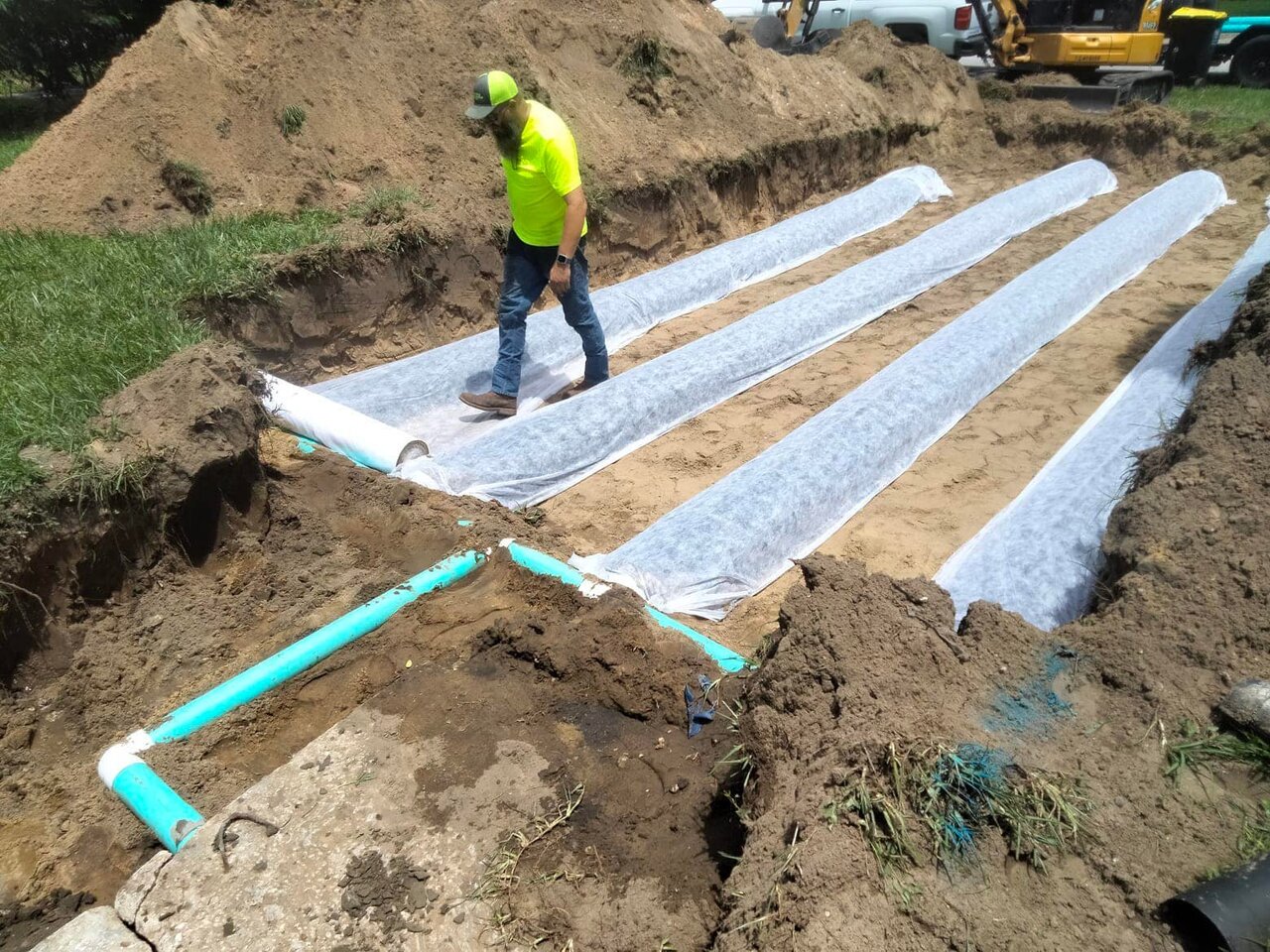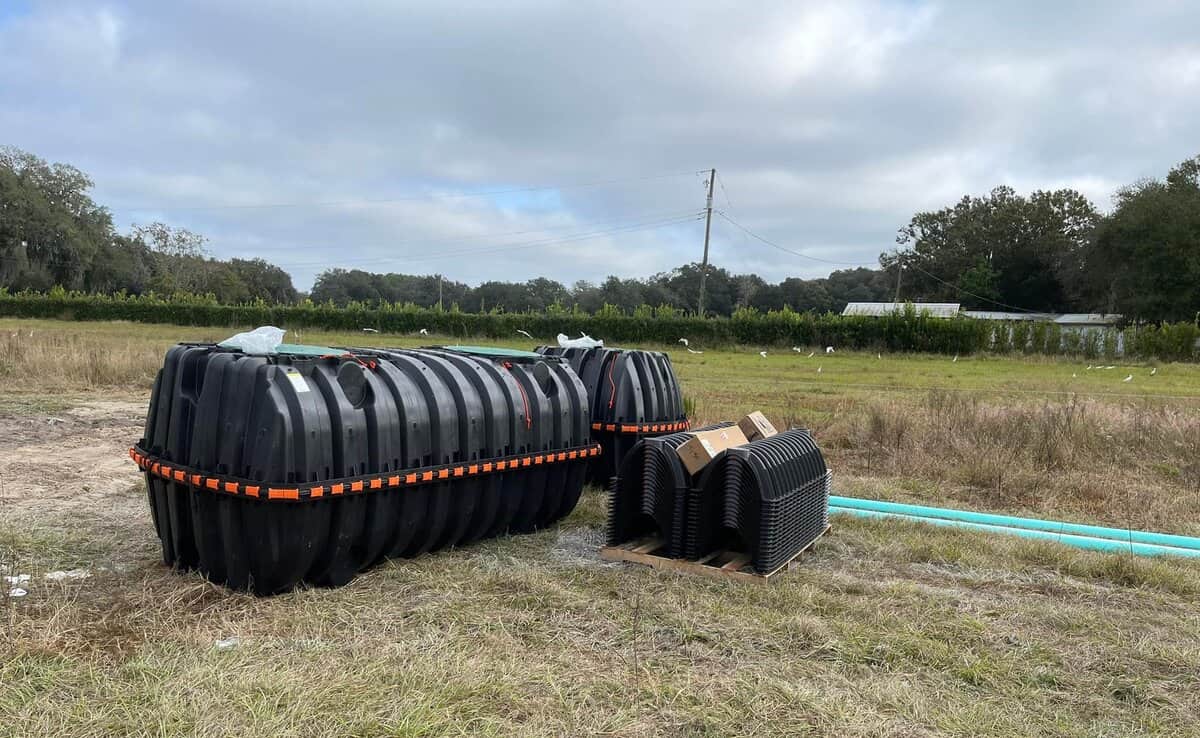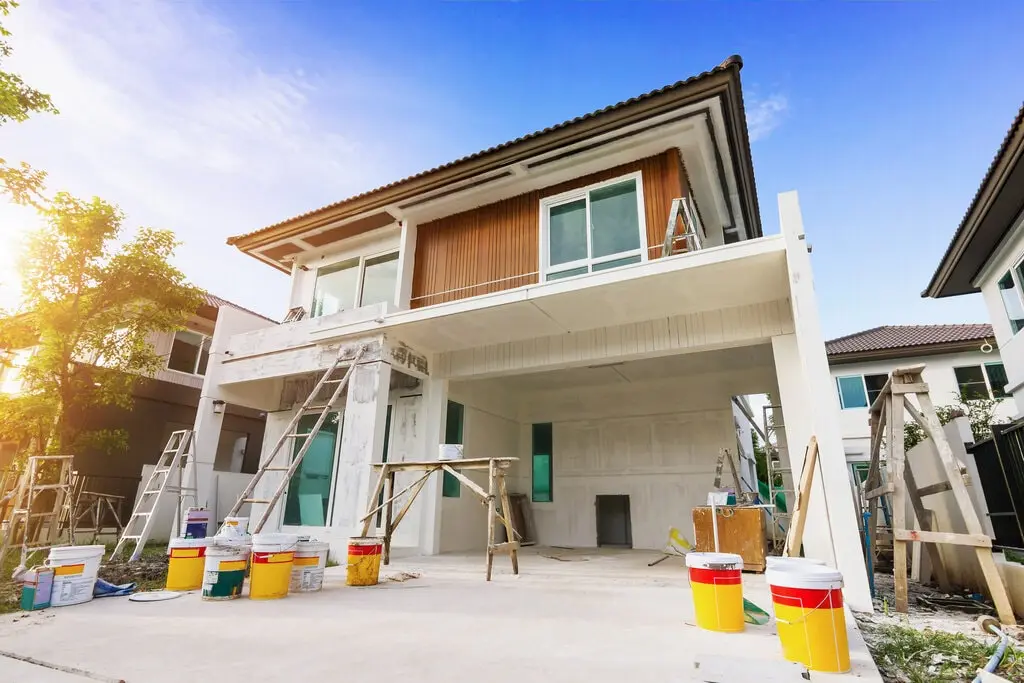For many homeowners who are in need of a new septic system, the process is unfamiliar, daunting, and stressful. However, that does not have to be the case. Understanding the basics of how a septic system functions and using a septic system installation checklist can go a long way toward delivering peace of mind and a smooth process.
How a Septic System Works
Septic systems are used in homes that do not use municipal wastewater treatment services. This is often because such service is unavailable in the location of the home or because it is not required by local ordinance.
Much like municipal sewer systems, a septic system’s purpose is to remove and treat the wastewater from toilets, sinks, tubs, showers, and the laundry. The main difference is that a septic system will be responsible for the treatment portion that a municipality would otherwise provide.
Wastewater from the home exits through a pipe into a septic tank, an underground watertight container. In the septic tank, solids settle to the bottom, floatable materials rise to the top, and the middle layer remains liquid, which is known as effluent.
The effluent will exit the tank through pipes leading to a drainfield (also known as a leech field), and will be gradually released into the soil through a series of pipes. The solids in the tank get broken down by bacteria, but the resulting sludge needs to be periodically pumped out by a professional septic company.
Septic System Installation Checklist
Whether septic contractors are going to install a new septic tank to replace an old one or they are building out a complete system for a new installation, there are several important factors to consider:
Septic systems are not a job for do-it-yourselfers.
Septic installation is complex, and every component must work as intended for a septic system to function properly. Additionally, there are many regulations and laws, building codes, permits, and inspections. In fact, most states stipulate that only a licensed professional can install a septic system.
Check local requirements for permits.
Different localities have different requirements. Many require a perc test – which is a test that measures the soil’s ability to absorb water. Most localities will also require that a final inspection be done by local authorities.
Make choices about the size and type of septic system.

A professional septic system contractor can help identify the best options for a given home, given its location, the number of residents, and the residents’ budget. A few things to consider:
- Do you want an aerobic or an anaerobic system? In anaerobic septic systems, no oxygen is required to help the bacteria break down waste. On the other hand, bacteria in an aerobic system do require oxygen. There are cost differences between the two types of systems, as well as future maintenance expenses, that should be taken into consideration.
- How big should the tank be? Having a tank that is the proper size ensures that the wastewater from the home is treated effectively and prevents the system from being overwhelmed with too much wastewater. Some localities have a minimum septic tank size, so it is important to check your local septic tank installation requirements. Beyond that, the proper size depends largely on the size of the home, the number of residents, and the residents’ lifestyle.
- What kind of tank do you want? Septic tanks can be made from several different materials, including concrete, plastic, and fiberglass. Each has benefits and drawbacks that can be explained by a septic professional and should be considered in the process of making a selection.
Find the best location on the property.
To maximize the effective operation of a septic system, it is important that the septic tank, the pipes, and the drainfield be situated correctly.
- Be sure that the septic tank is far enough away from the home to meet any local regulations.
- Find an area that does not require extensive excavation work. Ideally, this is a flat area.
- Do not position a septic system where runoff collects.
- Find a spot for the drainfield where the soil is not too dense. (A perc test can determine the suitability of the soil in the area being considered.)
- Be aware that large trees near a septic system can cause serious problems, so try to avoid doing the septic installation near them.
Prepare for the septic system installation.
- Be aware that water service can be out during installation of a new septic system, so plan ahead for however long the septic contractor expects the home to be without water.
- Be sure that the site for the new septic tank is excavated to the right size and that the site is level.
- If there is an existing septic tank, have it pumped and then removed by a septic system professional.
Have a professional septic system inspection.

Local authorities may require a final inspection as part of their permitting process. The inspection will assess whether the system is functioning properly.
An additional thing to consider in a new residential septic system installation is how to take care of the system afterwards. One common question that homeowners have is about landscaping. The septic system contractor can provide specific guidance, but the basic suggestions are:
- Avoid planting large trees or bushes near the septic tank or drainfield, as these can lead to damage.
- Don’t put structures on the drainfield, and do not park or drive on the drainfield.
- Try to use native plants with shallow roots near the drainfield.
- Do not add surface water to the drainfield through irrigation.
Residential Septic and Drainfield Installation in and Near Lakeland
Septic and Drainfield Depot is Lakeland’s most trusted septic service company. We have been Polk County residents for most of our lives, and we have a deep understanding of the unique needs of the community.
We offer a variety of septic services, including residential and commercial septic tank pumping; septic tank installation, inspection, repair, and cleaning; drainfield installation, repair, and inspection; and lift station installation and maintenance.
Services are available 24/7, and we offer free estimates and financing. Contact us today for all your septic system needs.







